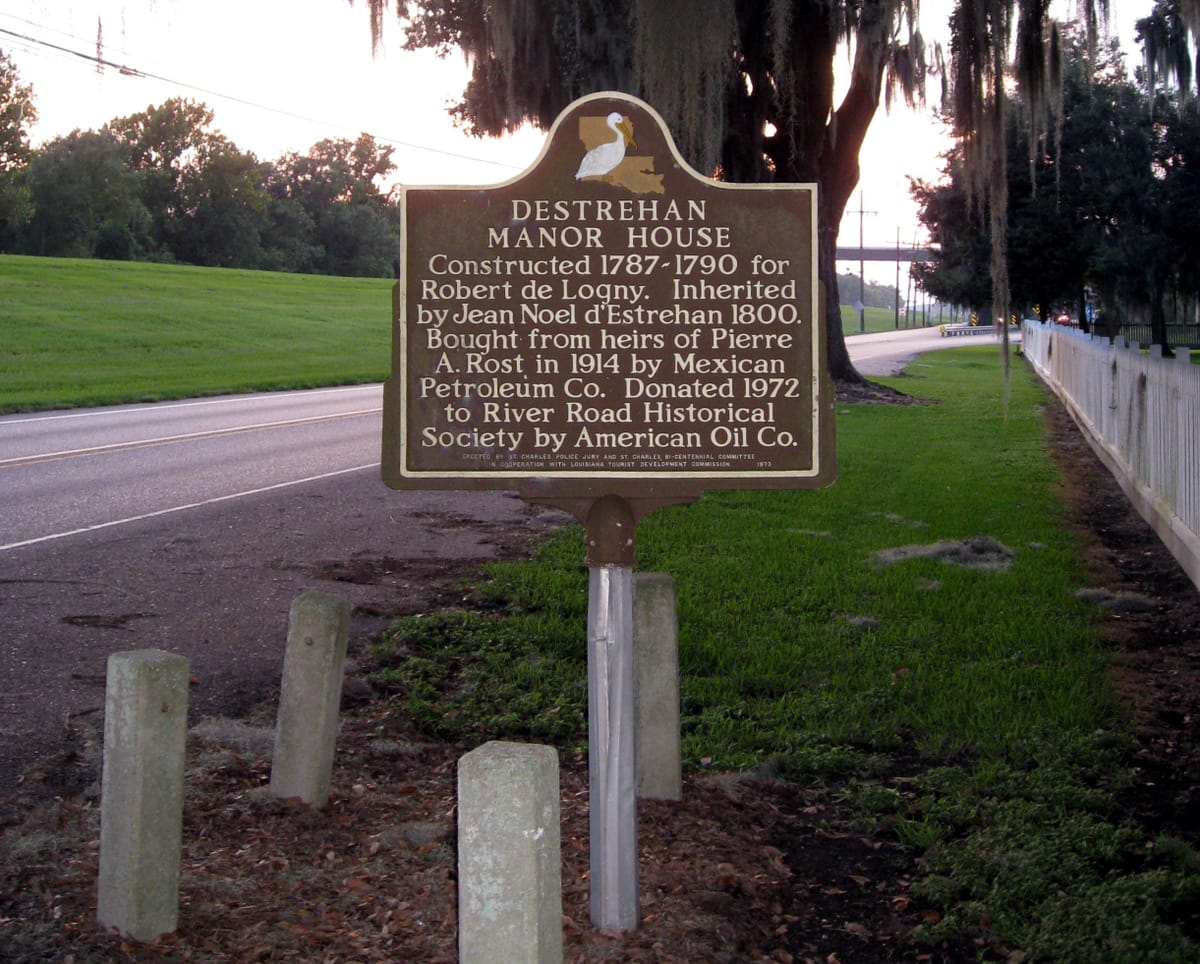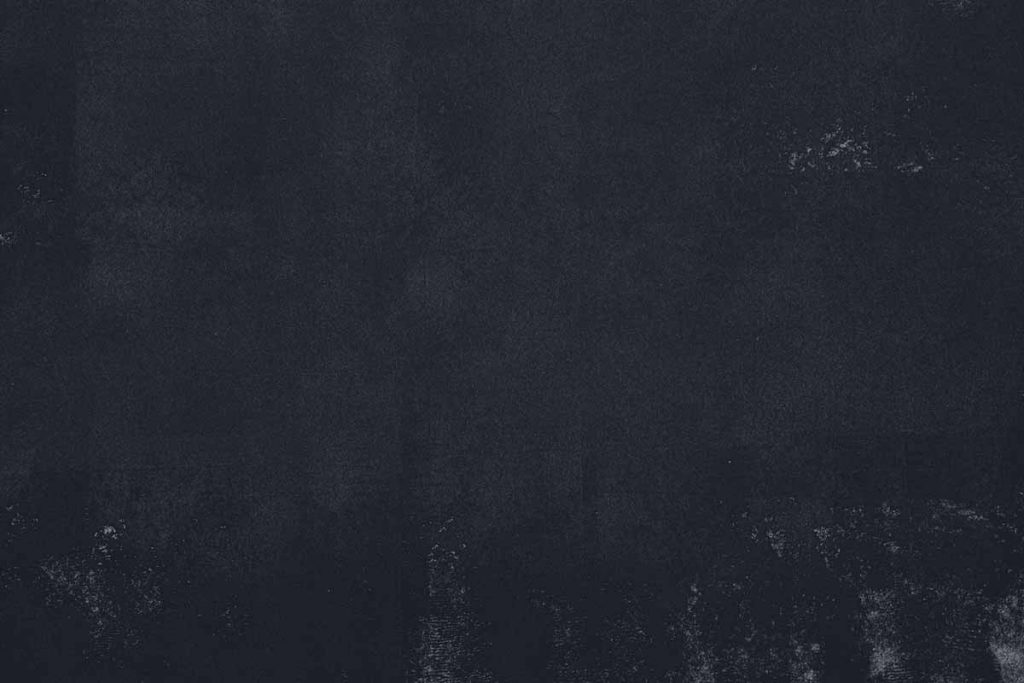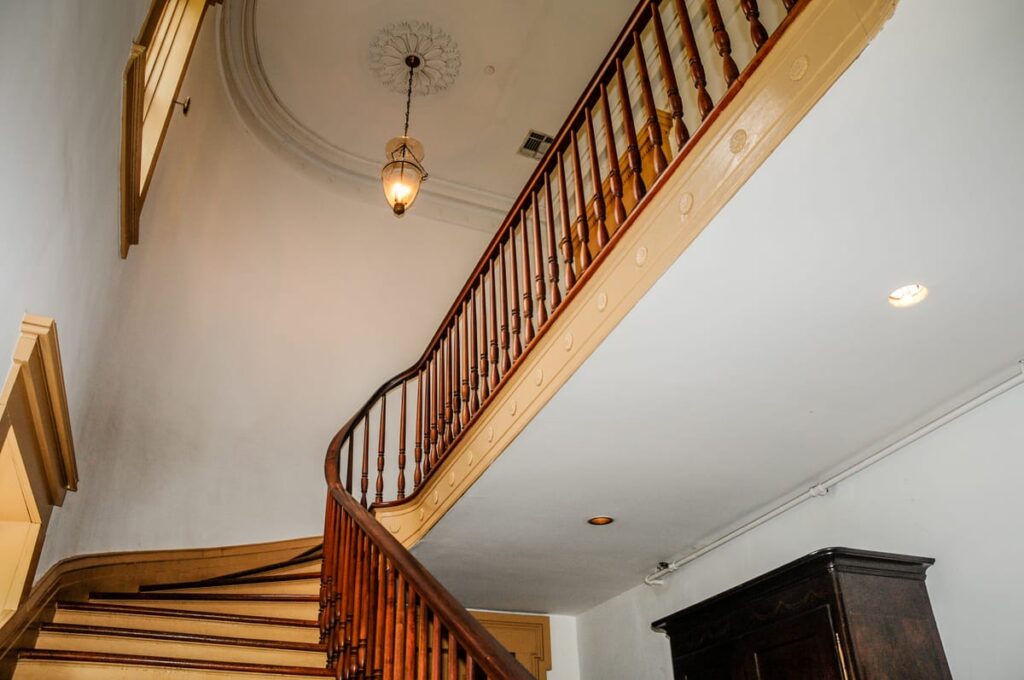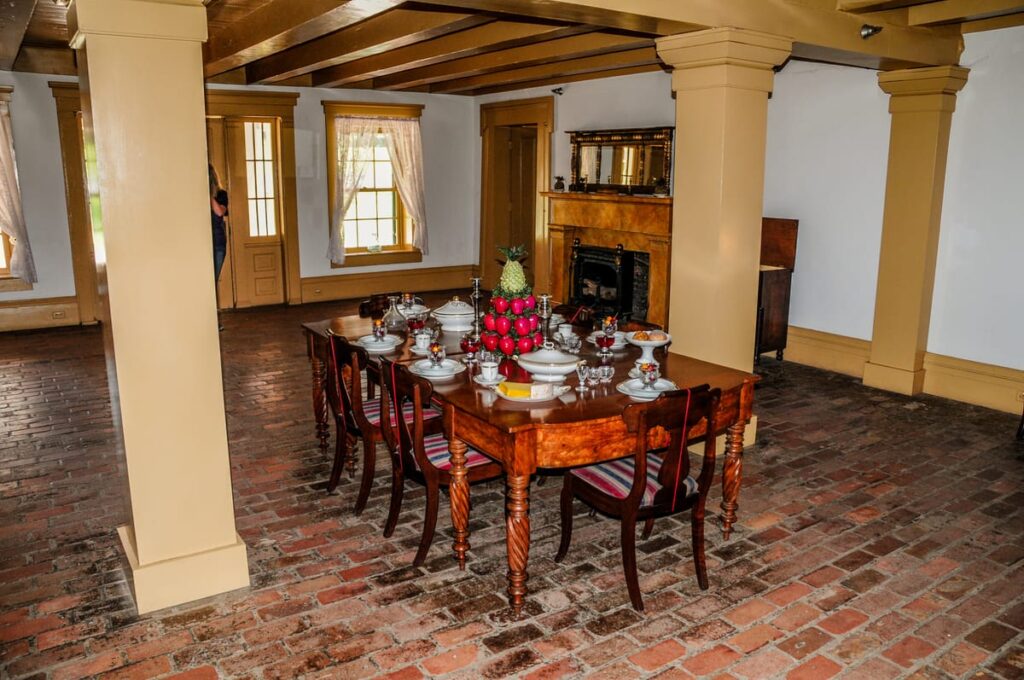
Destrehan Plantation
Shadow figures and strange lights have some calling this plantation positively paranormal
Paranormal Claims at
Destrehan Plantation
- A white apparition is sometimes seen around the property
- Anomalous photographs have been taken by previous visitors
- The figure of a former owner has been seen inside the house
- Visitors claim to see a young blonde girl playing around the house
- Strange lights have been spotted around the property
The Storied Past of Destrehan Plantation
Surrounded by white picket fences and partially obscured by willow trees, Destrehan Plantation seems intriguing enough on its own. But, pull off the busy adjacent highway and beyond the stark white perimeter fence, and you’ll only find more eye-catching intrigue.

A southern plantation from the earliest years of the United States, the Destrehan Plantation is a remarkably well-preserved educational tool for the surrounding community.
But, along with its educational and historical value, Destrehan Plantation has developed an additional reputation as one of Louisiana’s most haunted plantations.
Timeline of Destrehan Plantation's History
Swipe or use timeline points to see Destrehan Plantation through the years

1787
The story of Destrehan Plantation began when its first brick was laid in 1787. Robert Antoine Robin de Logny built the house for an indigo plantation he had on the land. The building contract, still on file with the St. Charles Parish courts, states the home was constructed by a contractor and six slaves over the course of three years. The contract makes Destrehan Plantation the oldest house in the lower Mississippi River Valley. Unfortunately for Robert de Logny, he died in late 1792, just two years after the home was completed.

1800
After Logny’s death, the plantation was purchased by Jean Noel Destrehan, who converted it from indigo to sugar production in response to massive indigo blight issues at the time. Destrehan quickly moved his family onto the expansive estate, but found it too small to accommodate his wife and their 14 children – eventually adding wings to the main house to accommodate the large family. A few years after Destrehan moved in, Louisiana became part of the United States after the Louisiana Purchase of 1803.

1811
In 1811, Destrehan Plantation was the site of a slave revolt that spanned across several plantations. Over several days in January of that year, a group of slaves from the nearby Andry Plantation overthrew their owner and marched towards New Orleans, recruiting more slaves and gathering more weapons as they marched. The revolting factions were eventually stopped and the leaders all tried and sentenced to death by slave-owning judges. Of those executed, three worked at the Destrehan Plantation.

1823
In 1823, Jean Noel Destrehan died and his son-in-law, Stephen Henderson, took over the plantation. Henderson hoped to lead a long life of growing wealth and family. However, Henderson’s wife died in 1830 before they could have children, and he fell into a depression until his death in 1838. When he died, Henderson’s will caused an uproar, as it demanded that his slaves be freed and sent to Liberia. The will was contested and, after 12 years, was overturned. None of the slaves were freed and all remained in captivity at Destrehan Plantation.

1839
Pierre Adolphe Rost, a state Supreme Court justice, bought Destrehan Plantation in 1839. When the Civil War broke out, Rost was made the Confederacy’s diplomat to Spain, where he soon moved and remained in exile following the Confederacy’s defeat. In 1865, Destrehan Plantation was seized by the Freedmen’s Bureau and turned into the Rost Home Colony. The Rost Home Colony provided education, healthcare, and other services to freed slaves in the aftermath of the war, but it wasn’t long before Rost returned for his property.

1866
After a pardon by President Johnson, Rost returned to Louisiana and demanded his land back. Though he didn’t immediately get his wish, Rost was able to charge rent for the Home Colony until it closed in late 1866. Rost lived a quiet life at the plantation until he died in 1868. His son continued to live in the plantation home until he sold it to the Destrehan Planting and Manufacturing Company in 1910. The property changed hands once again in 1914 when it was sold to American Oil Company, ushering in an era of change.

1914
Under American Oil, outbuildings were torn down and fields were ripped up to build an oil refinery. As infrastructure went up, Destrehan Plantation was nearly lost in a black sea of 20th century economic prosperity. But by the late 1950s, American Oil’s stake in the refinery became unprofitable. The refinery was torn down in 1959, and the following years wrecked Destrehan Plantation. Vandals invaded, as did treasure hunters, who searched for riches that Jean Lafitte, a friend of Stephen Henderson’s, supposedly stashed in the mansion.

1971
In 1971, American Oil donated the plantation to the River Road Historical Society for preservation, and funded a new fire system and roof for the home in 1990. With that, Destrehan Plantation was saved and brought back as a historical tourist destination. Destrehan Plantation has also been a popular filming location, providing backdrops for films like Interview with the Vampire and 12 Years a Slave. But, history still haunts Destrehan Plantation, and some who tour it leave with a belief in ghosts that they didn’t have when they arrived.

Destrehan Plantation’s Family Phantoms
A psychic who once visited the home claimed to see a highly detailed spiritual figure on the home’s staircase.
The man was described as having dark hair and a sharp nose, wearing a green waistcoat, and missing his right hand. The description seemed to fit an old photo of Nicholas Destrehan, and several others have claimed to see his specter since then.

Child Spirits at Destrehan Plantation
Another vivid apparition reported around the plantation is that of a young blonde girl who is often seen frolicking and playing. The little girl’s ghost has been seen playing with toys in the nursery, jumping and running around the foyer staircase, and hiding behind tour guides’ large hoop skirts.
Beyond just apparitions, visitors have also reportedly encountered strange flashes and strobes of light around the property.




